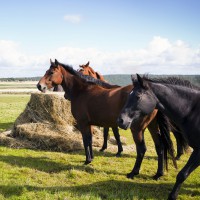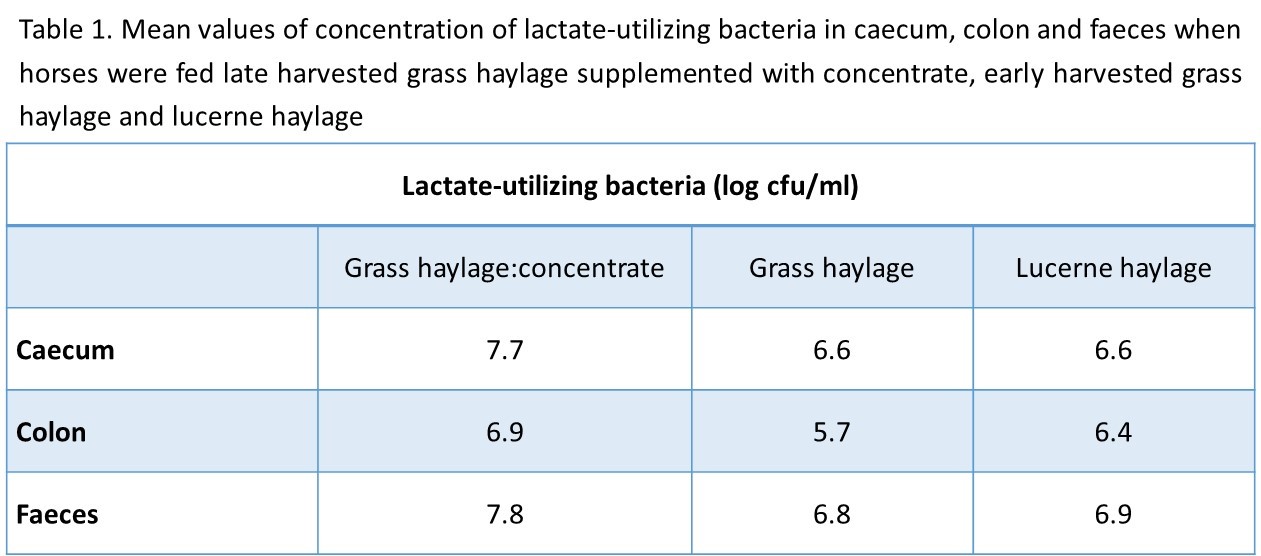Fibre and the hindgut environment

This study examined the impact on the hindgut ecosystem when horses were fed early harvested grass haylage, lucerne haylage and the more conventional diet of late harvested grass haylage supplemented with concentrate (<1 g starch/kg body weight and day). The grass haylages were from the same ley but harvested 6 weeks apart, the concentrate was oats and soybean meal.
Harvest date has an impact on for example the content of metabolizable energy (ME) and the fibre fraction NDF in forage. In this study the early harvested grass haylage had 11.6 MJ ME and 521 g NDF/kg DM and the late harvested grass haylage had 7.5 MJ ME and 670 g NDF/kg DM. The later the developmental stage of the grass the more lignified it is and the content of available energy decreases and NDF increases.
The different diets did not imply any differences in the concentrations of total anaerobic and cellulolytic bacteria in the hindgut flora. The concentrations of pectinolytic and xylanolytic bacteria were lower when the horses ate the early harvested grass haylage. This might be due to that pectins and xylans are easily fermentable fibres (included in hemicellulose) that might have been fermented earlier in the gastrointestinal tract and therefore were no longer available when the feed reached the hindgut. There were no difference in starch degrading bacteria but the concentration of lactate-utilizing bacteria was higher when the horses were fed the diet of late harvested grass haylage and concentrate (Table 1). This can be explained by the concentrate containing more starch and when starch is fermented by the hindgut bacteria lactate is produced.
Irrespective of which of the three diets the horses were fed the concentration of short-chain fatty acids in the hindgut did not differ. But the ratio (acetic acid + butyric acid) / propionic acid was lower when the horses were fed the diet of late harvested grass haylage and concentrate than the two other diets that consisted of only forage. This is because the relationship between how much of these acids that are produced is affected by the diet – a lot of forage gives a larger part acetic acid + butyric acid and concentrate implies a larger part of propionic acid. In this study the horses did not receive any large concentrate meals and therefore no decrease in the hindgut pH was observed, which can occur when large meals of starch rich concentrate are fed. The lower NDF content in the early harvested grass haylage did not have any negative effects on the hindgut environment.
In conclusion, the different forage based diets implied minor changes in the hindgut bacterial flora, but an evident effect of the concentrate could be observed by the increase in lactate-utilizing bacteria in spite of small concentrate meals.
Sara Muhonen, AgrD

